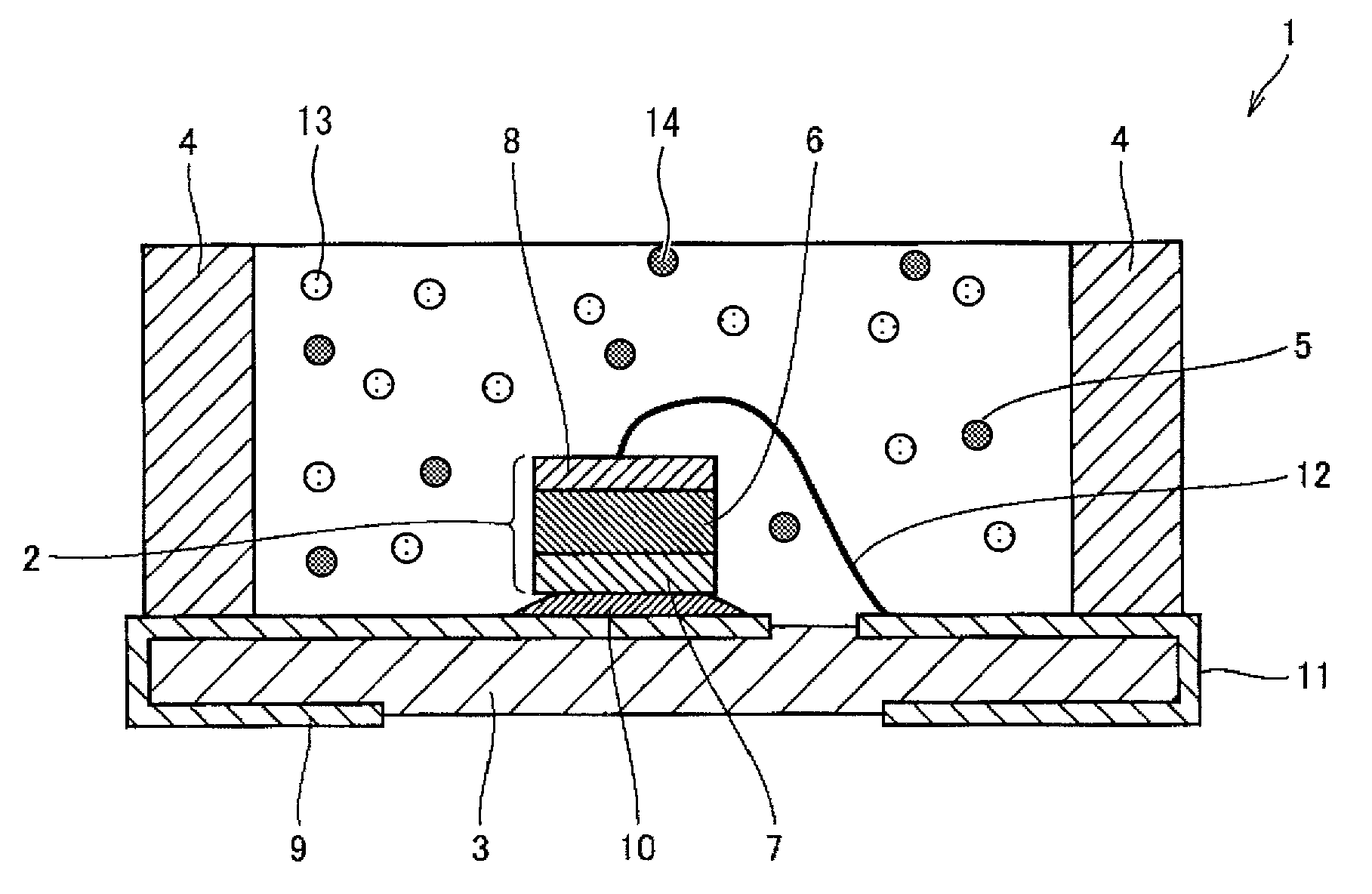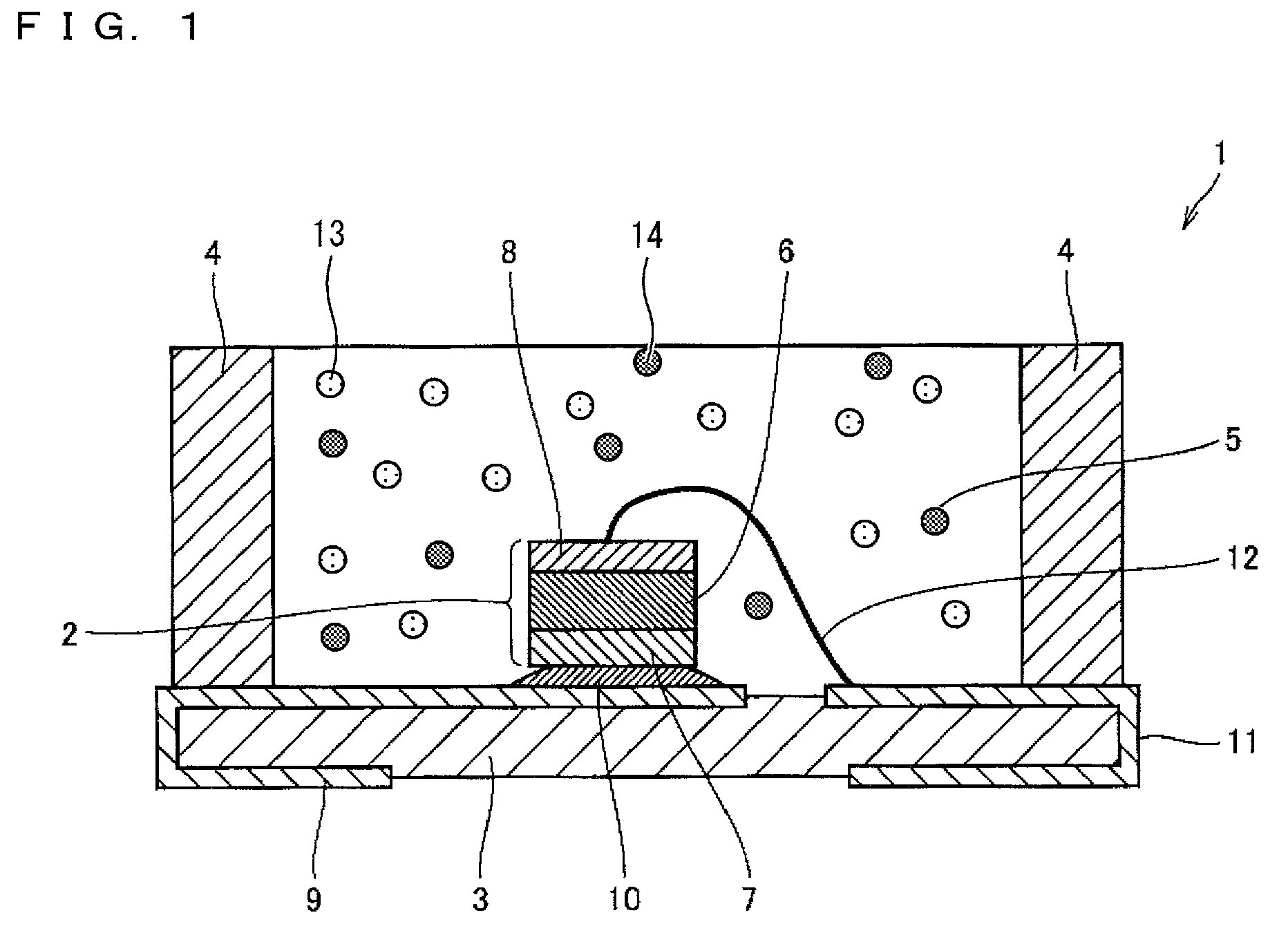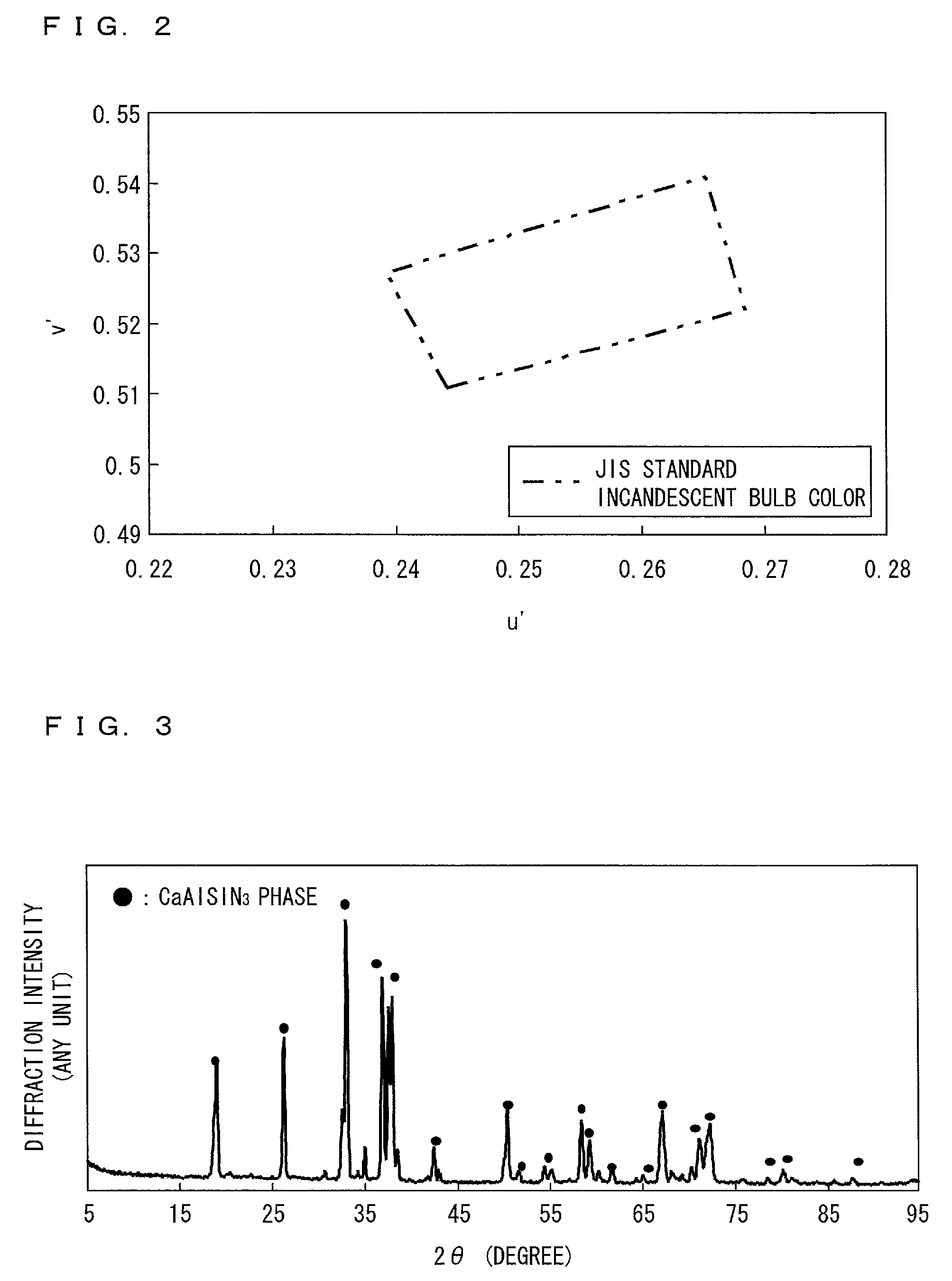Light-emitting device
a light-emitting device and light-emitting technology, which is applied in the direction of luminescent compositions, energy-efficient lighting, sustainable buildings, etc., can solve the problems of reducing the light-emitting device's light-emitting efficiency and not ideal for warm emission, and achieve efficient white light emission and high ra and r9.
- Summary
- Abstract
- Description
- Claims
- Application Information
AI Technical Summary
Benefits of technology
Problems solved by technology
Method used
Image
Examples
production example 1-1
Preparation 1 of Orange Phosphor
[0158]A phosphor was synthesized by having a crystal composed of 0.3CaAlSiN3.0.7LiSi2N3 serve as a crystal of a host material, and activating this with Ce.
[0159]More specifically, to obtain a compound having a theoretical composition formula of Ce0.0033Li0.1157Ca0.0496Al0.0496Si0.28O00.0050N0.4959, starting powder was weighed so that a whole amount was 2 g with a composition ratio of Si3N4:67.3% by weight, AlN: 10.4% by weight, Li3N: 6.9% by weight, Ca3N2: 12.5% by weight, and CeO2: 2.92% by weight, and was mixed for 10 minutes with an agate pestle and mortar. At this time, the ratio of Ce in the starting powder was 2.4% by weight. Thereafter, an obtained mixture was gravity-dropped and filled into a crucible made of boron nitride (volume filled by 38%).
[0160]Note that each of the processes of the weighing and mixing of the powder were performed inside a glove box capable of maintaining a nitrogen atmosphere including moisture equal to or less than 1 ...
production example 1-2
Preparation 2 of Orange Phosphor
[0170]A phosphor was synthesized by having a crystal composed of 0.3CaAlSiN3.0.7LiSi2N3 serve as a crystal of a host material, and activating this with Ce.
[0171]More specifically, to obtain a compound having a theoretical composition formula of Ce0.066Li0.1148Ca0.0492Al0.0492Si0.2787O0.0098N0.4918, starting powder was weighed so that a whole amount was 2 g with a composition ratio of Si3N4:65.4% by weight, AlN: 10.1% by weight, Li3N, 6.7% by weight, Ca3N2: 12.2% by weight, and CeO2: 5.66% by weight, and the powder was mixed for 10 minutes with an agate pestle and mortar. At this time, a charge weight ratio of Ce was 4.6% by weight. Thereafter, an obtained mixture was gravity-dropped and filled into a crucible made of boron nitride (volume filled by 38%).
[0172]Note that each of the processes of the weighing and mixing of the powder were performed inside a glove box capable of maintaining a nitrogen atmosphere including moisture equal to or less than 1 ...
production example 2-1
Preparation 1 of Eu-Activated β-Sialon Phosphor
[0191]In order to obtain an Eu-activated β-sialon phosphor in which Eu was 0.09 at. %-activated in a substance having the composition formula represented by Si6-z.Alz.Oz.N8-z′ where z′ was 0.23, powders were weighed so as to have a composition of 95.82% by weight of α-silicon nitride powder, 3.37% by weight of aluminum nitride powder and 0.81% by weight of europium oxide powder. The powders were mixed for 10 or more minutes with use of a mortar and pestle made of sintered silicon nitride, to obtain a powder aggregate. The powder aggregate was gravity-dropped into a crucible made of boron nitride whose diameter was 20 mm and height was 20 mm.
[0192]Subsequently, the crucible was set to a gas pressure sintering furnace of a graphite resistance heating system. The baking atmosphere was vacuumed with a diffusion pump and was heated from room temperature to 800° C. at a rate of 500° C. per hour. Thereafter at 800° C., nitrogen having a purity...
PUM
 Login to View More
Login to View More Abstract
Description
Claims
Application Information
 Login to View More
Login to View More - R&D
- Intellectual Property
- Life Sciences
- Materials
- Tech Scout
- Unparalleled Data Quality
- Higher Quality Content
- 60% Fewer Hallucinations
Browse by: Latest US Patents, China's latest patents, Technical Efficacy Thesaurus, Application Domain, Technology Topic, Popular Technical Reports.
© 2025 PatSnap. All rights reserved.Legal|Privacy policy|Modern Slavery Act Transparency Statement|Sitemap|About US| Contact US: help@patsnap.com



